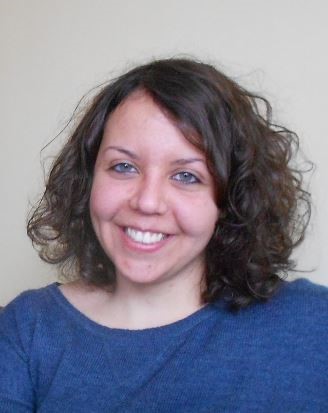Institut de Biologie et Chimie des ProtéinesInstitut de Biologie et Chimie des Protéines
Nature 2014 Dec 11;516(7530):259-62.Fleurie A, Lesterlin C, Manuse S, Zhao C, Cluzel C, Lavergne JP, Franz-Wachtel M, Macek B, Combet C, Kuru E, VanNieuwenhze MS, Brun YV, Sherratt D, Grangeasse C.
Cv
Sylvie Manuse, 26 ans, a démarré son cursus scientifique par une licence de Biologie Générale à Grenoble, puis s'est orientée vers le Master de Biochimie Structurale et Fonctionnelle de l?Université de Lyon 1.
Durant son année de Master 2, elle a effectué un stage dans l'équipe du Dr. Christophe Grangeasse à l'Institut de Biologie et Chimie des Protéines de Lyon, avec pour thème d'étude le rôle de la phosphorylation par la kinase StkP dans la division du pneumocoque.
Elle a poursuivi ces travaux en thèse avec l'étude de différents substrats de StkP, dont la protéine MapZ. C'est ainsi qu'elle a récemment mis en évidence un nouveau mécanisme de régulation positive du positionnement de l'anneau FtsZ au futur site de division, chez le pneumocoque ; MapZ étant la protéine qui permet de positionner FtsZ.
Contact
Sylvie Manuse
Equipe Bactéries Pathogènes et Phosphorylation des Protéines
Institut de Biologie et Chimie des Protéines
CNRS / UCBL UMR 5086
7, passage du Vercors
69367 Lyon cedex 07
Cette adresse e-mail est protégée contre les robots spammeurs. Vous devez activer le JavaScript pour la visualiser.
Résumé de l'article
In every living organism, cell division requires accurate identification of the division site and placement of the division machinery.
In bacteria, this process is traditionally considered to begin with the polymerization of the highly conserved tubulin-like protein FtsZ into a ring that locates precisely at mid-cell.
Over the past decades, several systems have been reported to regulate the spatiotemporal assembly and placement of the FtsZ ring. However, the human pathogen Streptococcus pneumoniae, in common with many other organisms, is devoid of these canonical systems and the mechanisms of positioning the division machinery remain unknown.
Here we characterize a novel factor that locates at the division site before FtsZ and guides septum positioning in pneumococcus.
Mid-cell-anchored protein Z (MapZ) forms ring structures at the cell equator and moves apart as the cell elongates, therefore behaving as a permanent beacon of division sites.
MapZ then positions the FtsZ ring through direct protein-protein interactions.
MapZ-mediated control differs from previously described systems mostly on the basis of negative regulation of FtsZ assembly. Furthermore, MapZ is an endogenous target of the Ser/Thr kinase StkP, which was recently shown to have a central role in cytokinesis and morphogenesis of S. pneumoniae.
We show that both phosphorylated and non-phosphorylated forms of MapZ are required for proper Z-ring formation and dynamics.
Altogether, this work uncovers a new mechanism for bacterial cell division that is regulated by phosphorylation and illustrates that nature has evolved a diversity of cell division mechanisms adapted to the different bacterial clades.




